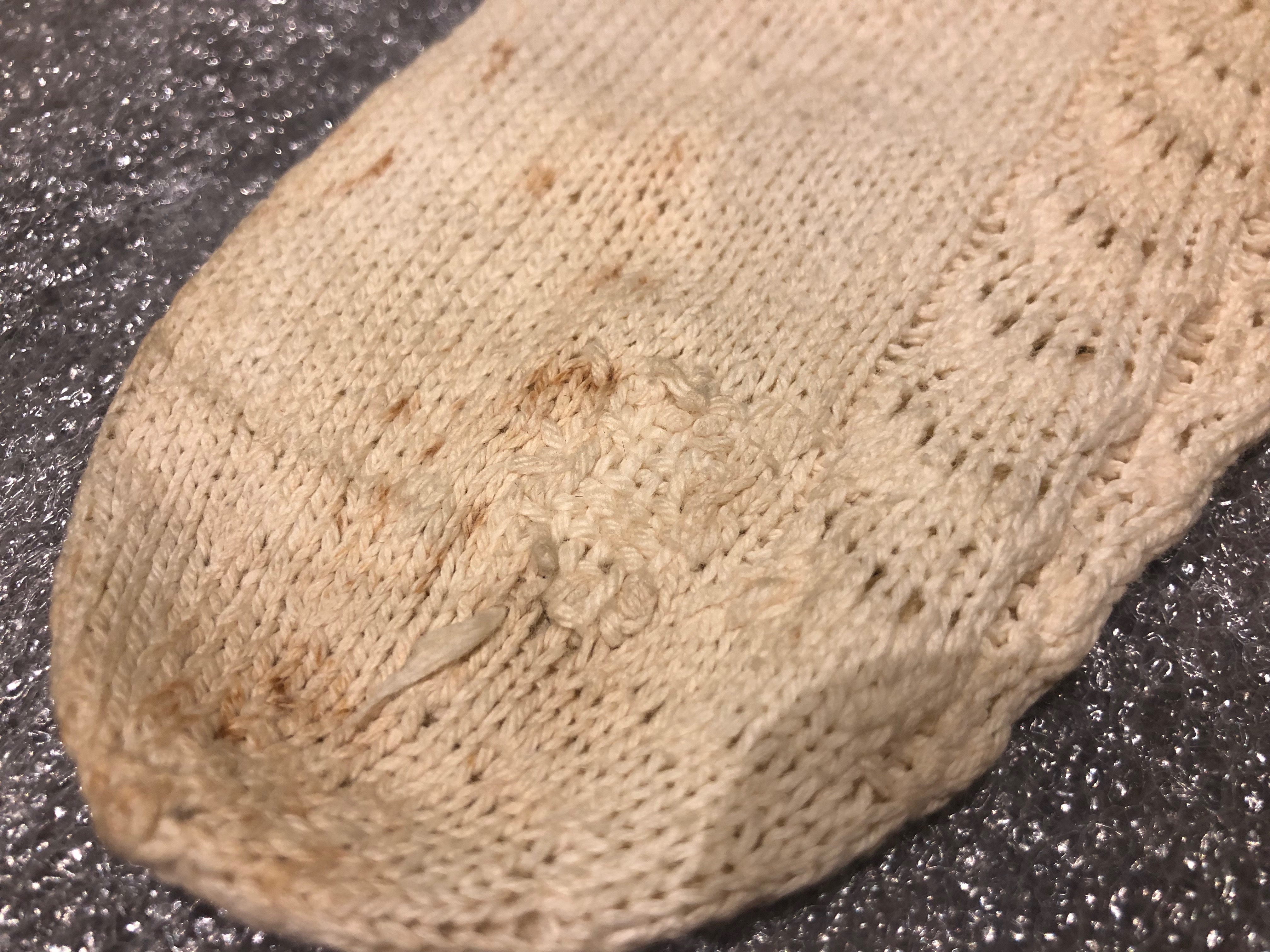Making a Mend: Historic Repair Techniques for Costume
AnnaLivia McCarthy, 2019 Fashion Archives Intern
What do you do when your favorite jeans wear out? Or you lose a button on your favorite blouse? Today’s fast fashion practices encourage consumers to replace garments that are torn, faded, or out of style, but in many costumes in the Fashion Archives at MdHS, evidence of repair means that a garment was well loved. Repairs can also show how people modified a garment over time to follow fashion trends.
One common type of mending is darning, a sewing technique that replaces fibers in an area of loss. You might associate darning with a solution for holey socks, but it a useful technique to repair many kinds of textiles.
 |
 |
Left, hand crochet stockings, Right, detail of hand crocheted stockings, Gift of John Philips Cranwell and Mrs. Ralph T. Seward in memory of their mother, Mrs. James Harford Cranwell née Philips, 1956.56.90
These white knitted socks from MdHS, have been darned to fill a hole near the toe on the left sock. When a fabric wears out completely, the resulting loss can be darned to recreate the missing warp and weft yarn. In this case, the surrounding original material is knitted, but the repairer chose to create a plain weave in the loss. In other instances of damage, such as a tear, fiber may not be missing, but the mender chose darning to close the gap.

Left, detail of darning on a white linen dress, ca. 1900s-1910s, Maryland Historical Society, Gift of Mrs. William Wallace Symington, 1974.46.2
The repairer of this early 1900s linen dress took great care to create evenly spaced, parallel darning stitches. She continued each row about one quarter of an inch beyond the tear to secure the stitching in to a stable area of fabric.

AnnaLivia McCarthy, 2019 Fashion Archives intern, darning a piece of embroidered muslin in the study collection of Maryland Historical Society.
Today, historic textiles in museum collections are repaired in a similar technique. Conservation of tears sometimes requires further stabilization using a conservation-grade netted patch and fine thread called hair silk. Conservators are careful to align broken yarns and maintain even tension around the affected area. It is fascinating how many techniques used in modern conservation practice are modified versions of traditional textile repair or restoration. One major difference between historic and modern approaches, however, is reversibility. In conservation darning, the process must be reversible so that in the future it will not harm the textile. Historic darning, on the other hand, is not only extremely secure and long lasting, it also contributes an important part of costume’s history and is preserved as such.
Resources
Cooper Hewitt, Make Do and Mend: The Art of Repair
American Institute for Conservation Wiki Textile Specialty Group: Darning Stitch

